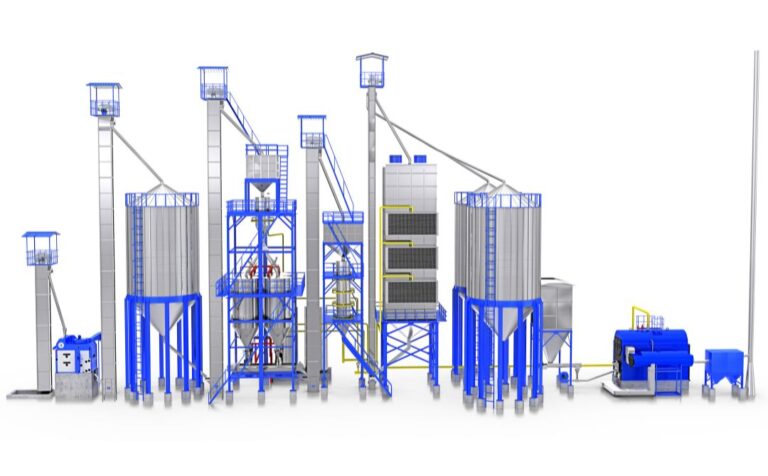Table of Contents
Understanding the difference between steam and sella rice is key to selecting the perfect grain for taste, texture, and nutrition. With India producing over 135 million tonnes of rice annually, rice processing types like steaming and parboiling influence quality, market value (₹30-150/kg), and health benefits.
This blog explores the steam rice vs sella rice comparison, delves into the nutritional comparison of sella and steam rice, and provides insights into which is better: sella rice or steam rice, empowering you to make informed choices with SKF Elixer’s advanced rice processing solutions.
The Significance of Rice Processing in India
Rice, feeding over 1.4 billion Indians, is processed in various ways to enhance flavor, shelf life, and nutrition. Steam rice and sella rice, both derived from paddy, undergo distinct rice processing types, which are steaming and parboiling, that affect their texture, cooking time, and health benefits.
Poor processing can reduce head rice yield by 5-10%, costing millers ₹50,000-₹2 lakh per 100 tonnes, while the right method boosts quality and market price. For households consuming 5-10 kilograms of rice monthly, choosing between Basmati rice as steam or sella impacts taste and health.
Understanding parboiled rice comparison helps consumers and millers optimize culinary and commercial outcomes. Let’s uncover what is the difference between steam and sella rice and how it shapes your rice experience.
You might also like: Benefits of aged rice and their cooking characteristics
What Is the Difference Between Steam and Sella Rice?
Both are processed forms of rice, primarily Basmati rice or other long-grain varieties, but their production methods create distinct characteristics:
- Steam Rice
- Process: Paddy is soaked, steamed briefly (20-30 minutes at 100°C), and dried before milling to remove the husk. This partial cooking gelatinizes starch, retaining aroma and firmness.
- Characteristics: White, fluffy grains with a light, aromatic flavor, ideal for biryanis and pulao. Cooking time: 15-20 minutes.
- Market Price: ₹50-120/kg (Basmati steam).
- Yield: 65-70% head rice, as steaming minimizes breakage.
- Sella Rice (Parboiled Rice)
- Process: Paddy is soaked (6-12 hours), parboiled (boiled with husk at 70-80°C), and dried before milling. This hardens grains, enhancing durability and nutrient retention.
- Characteristics: Golden-yellow grains (due to parboiling), firm texture, non-sticky, ideal for heavy dishes like biryani or fried rice. Cooking time: 25-30 minutes.
- Market Price: ₹60-150/kg (Basmati sella).
- Yield: 70-75% head rice, as parboiling strengthens grains.
Nutritional Statistics
Nutritional comparison of sella and steam rice highlights their health impacts:
- Steam Rice:
- Nutrients: Retains 80-85% of vitamins (B1, B3) and minerals (iron, magnesium) in the bran, but some are lost during milling. Per 100 grams: 130 kcal, 2.7g protein, 0.3g fiber.
- Benefits: Easier to digest, ideal for light diets or children. Lower glycemic index (50-60) than white rice, suiting mild diabetic needs.
- Drawbacks: Loses some nutrients during steaming, less nutrient-dense than sella.
- Sella Rice (Parboiled):
- Nutrients: Parboiling drives nutrients into the grain, retaining 90-95% of B vitamins and minerals. Per 100 grams: 135 kcal, 3g protein, 0.5g fiber, higher iron (1-2 mg).
- Benefits: Higher nutrient retention, better for long-term health, and lower glycemic index (45-55), ideal for diabetes management.
- Drawbacks: Slightly longer cooking time and less aroma.
Sella rice offers superior nutrition, while steam rice excels in digestibility and aroma, per nutritional comparison of sella and steam rice.
You might also like: How to choose the right paddy parboiling plant manufacturer
Cooking Properties
Nutritional comparison of sella and steam rice highlights their health impacts:
- Steam Rice:
- Nutrients: Retains 80-85% of vitamins (B1, B3) and minerals (iron, magnesium) in the bran, but some are lost during milling. Per 100 grams: 130 kcal, 2.7g protein, 0.3g fiber.
- Benefits: Easier to digest, ideal for light diets or children. Lower glycemic index (50-60) than white rice, suiting mild diabetic needs.
- Drawbacks: Loses some nutrients during steaming, less nutrient-dense than sella.
- Sella Rice (Parboiled):
- Nutrients: Parboiling drives nutrients into the grain, retaining 90-95% of B vitamins and minerals. Per 100 grams: 135 kcal, 3g protein, 0.5g fiber, higher iron (1-2 mg).
- Benefits: Higher nutrient retention, better for long-term health, and lower glycemic index (45-55), ideal for diabetes management.
- Drawbacks: Slightly longer cooking time and less aroma.
Sella rice offers superior nutrition, while steam rice excels in digestibility and aroma, per nutritional comparison of sella and steam rice.
Rice Processing Method
Benefits of choosing the right rice processing method impact mills and kitchens:
- Higher Yield: Sella rice yields 70-75% head rice vs. 65-70% for steam, saving ₹50,000-₹2 lakh per 100 tonnes.
- Market Appeal: Sella fetches ₹60-150/kg for export markets; steam suits premium domestic markets (₹50-120/kg).
- Nutritional Value: Sella enhances health.
- Shelf Life: Sella lasts 18-24 months vs. 12-18 months for steam, minimizing spoilage (₹20,000-₹1 lakh per 100 tonnes).
- Versatility: Steam suits aromatic dishes; sella excels in heavy recipes, meeting diverse needs.
Challenges and Solutions
Choosing between steam rice vs sella rice faces hurdles:
- Processing Costs: Sella requires longer parboiling (₹50,000-₹2 lakh for equipment), steam is simpler (₹20,000-₹1 lakh).
- Solution: Start with steam processing for small mills, upgrade to sella with profits.
- Consumer Awareness: Limited knowledge of nutritional comparison of sella and steam rice.
- Solution: Educate via campaigns or packaging labels.
- Equipment Needs: Parboiling needs precise temperature control.
- Solution: Use automated systems for consistency.
Ready for which is better: sella rice or steam rice? Follow these steps:
- Assess Market: Target export markets (sella, ₹60-150/kg) or domestic (steam, ₹50-120/kg).
- Test Paddy: Analyze grain type to choose rice processing types.
- Select Equipment: Opt for either steaming or parboiling systems.
- Partner with Vendors: Work with SKF Elixer for automated processing plants.
- Budget: Plan investment for setup, ₹50,000-₹2 lakh maintenance yearly.
- Educate Consumers: Promote cooking properties of sella rice vs steam rice.
Conclusion
Understanding the difference between steam and sella rice empowers Indian millers and households to choose the right rice types for health, taste, and profitability. Sella rice offers nutrition and durability, while steam rice excels in aroma and quick cooking, each serving unique needs.
By leveraging benefits of choosing the right rice processing method, mills save ₹50,000-₹10 lakh per 500 tonnes, and households enhance health. SKF Elixer India Pvt. Ltd. offers advanced Paddy Processing Plants with precise steaming and parboiling, ensuring 70-75% head rice yield and FSSAI compliance.
Contact SKF Elixer today to optimize your parboiled rice comparison and elevate your rice processing.
FAQs
Q1: What is the difference between steam and sella rice?
Steam rice is briefly steamed for aroma and fluffiness (₹50-120/kg); sella rice is parboiled for durability and nutrition (₹60-150/kg).
Q2: What is the nutritional comparison of sella and steam rice?
Nutritional comparison of sella and steam rice: Sella retains 90-95% nutrients (135 kcal, 3g protein/100g); steam retains 80-85% (130 kcal, 2.7g protein), with sella better for diabetes.
Q3: What are the benefits of choosing the right rice processing method?
Higher yield (70-75% for sella), better nutrition (sella), aroma (steam), and savings of ₹50,000-₹2 lakh per 100 tonnes.
Q4: What are the cooking properties of sella rice vs steam rice?
Sella is firm, non-sticky, cooks in 25-30 minutes; steam is fluffy, aromatic, cooks in 15-20 minutes, suiting different dishes.
Q5: Which is better: sella rice or steam rice?
Sella for nutrition and heavy dishes; steam for aroma and quick cooking, depending on culinary or market needs.
Good reads are meant to be shared









